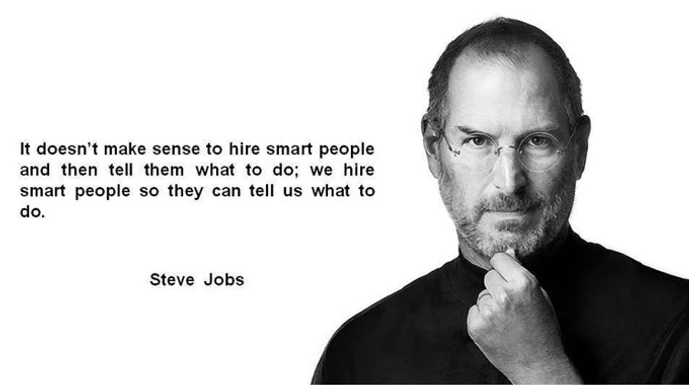
It’s 5 o’clock Somewhere… (or) Managing Remote Teams
 February 11, 2020
February 11, 2020 Let’s face it. The world revolves around the internet – 24 hours a day, 7 days a week, in over 27 time zones (how does that work?!). Heaven knows you could close your eyes, point, and you’d land on an article about the disadvantages of being ‘far too connected’. What we don’t hear about quite so often, are the advantages that being connected has brought; most significantly, to the workforce.

Read the interview in Growth Business UK with our Founder Rebecca Fitzgerald. In it she explains how she has made a business out of using remote working as a key component to the online provision of brand protection.
Recent studies found that as of 2019, 16% of all companies are fully remote, and 40% of companies now employ some form of remote workforce; be it creating a customer service base in another country, or contracting out certain parts of the organisation to a third-party vendor. In fact, many departments are successfully managed by individuals without ever having met face to face. There are a lot of positives to managing a remote team. For example:
- No location restrictions – studies show that workers are less stressed and tired when there isn’t a commute involved. Plus, there is far less absenteeism and fewer late starts when the commute is removed.
- Hiring right – the talent you need may not live nearby; and by hiring remotely you can guarantee you’re hiring the right person for the job.
- Follow the sun – in a 24/7 world, hiring in different time zones means less turnover with a graveyard shift team. What is considered undesirable hours for one country may be the perfect work schedule for another, depending on the time zones.
- Administrative savings/less overhead – surveys show that workers are willing to take a pay cut to work from home; while offices can reduce their overall administrative costs; no need to keep the lights on, so to speak.
With all of these advantages, you would imagine that more companies would embrace the telecommuting culture, and we are certainly seeing an overall shift.
However there are obviously some challenges to managing a remote workforce (espcially in some of the more ‘traditional’ industries)… but, these issues can easily be addressed.
Read our top tips below…
MANAGING A REMOTE TEAM – THE PITFALLS AND HOW TO AVOID THEM
- Lack of team spirit – while it sounds great to work from your own home, it can get lonely, and isolating. Make sure you have regular team meetings, using web meetup systems such as Skype, Whatsapp, or Google Hangouts. There are numerous other programmes just as useful. These meetups should include work conversations (company or project updates) but also allow for some time for the team to chat, get to know one another and share their thoughts so the team feels motivated, connected and part of the organisation
- Out of sight doesn’t mean out of mind – it’s expected that in-house decisions will be made, sometimes in hallways, or across the room. Make sure these decisions are shared with your entire company, including your remote team members. There are loads of programmes you can use to ensure that changes to the work or organisation are well-documented and properly communicated. Basecamp, Trello, even Dropbox make great virtual project management systems.
- The fear of trust – i.e. micromanaging – we hear this one quite often. “How can I trust that my team is actually doing the work if I can’t see them?” Frankly, if you have to ask yourself that question then you haven’t hired the right team. This is a classic symptom of micromanagement and can be incredibly detrimental to your organisation. People can tell when they’re not trusted, regardless of where they do their jobs. Simple shifts in management style can eliminate this mistrust, and you’ll be amazed at the increased productivity once you’re able to step back, and trust. And, as Steve Jobs once said…

- Setting due dates, having regular check-ins that include updates to assigned tasks are a good start. Schedules can be set and communicated in Planday plus, enlist a project management tool and use it as intended. This will help you not only trust your team but will allow them to feel trusted to get the job done and done right. Support tools such as Zendesk, Sprout Social, Conversocial, and others should record all tasks completed during a shift as well. Quick checks into completed work make things super easy to quality check your hourly staff’s work as well.
- Team communication – Not only does the organisation need to be communication-vigilant, but your team members should also learn how to be incredibly mindful with their communication to the organisation. Enforce policies such as: public availability calendars, live chat systems (see: WhatsApp, Gchat, Skype, Campfire) and, have a Social Media Policy!
With small changes, your organisation will reap the benefits that a remote workforce provides. StrawberrySocial has cracked that particular code when it comes to enlisting a 100% remote workforce – read more (via an interview in Growth Business UK) from our Founder Rebecca Fitzgerald. Our fabulous team works across different time zones and different cultures, bringing with them enthusiasm, smarts and personality in abundance!
Jennifer Puckett, Content Lead for StrawberrySocial, has managed remote teams for over 10 years. “The biggest benefit to having a distributed workforce has got to be the level of passion and care that my team members bring to their day. Because teams have the opportunity to choose their hours, and are working in a field they feel passionate about, they’re able to work at times when they can bring their very best. Watching them learn about new people, in different parts of the world also brings a sense of community, and I love seeing them learn and connect with people they’d never normally get a chance to meet.”


 Share This Post
Share This Post